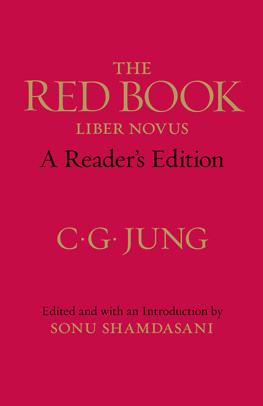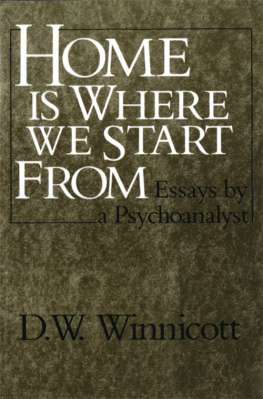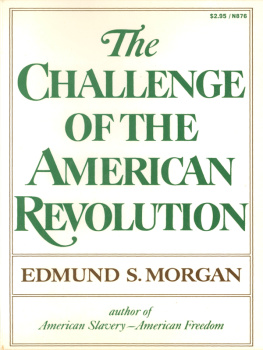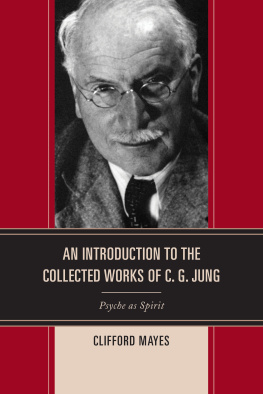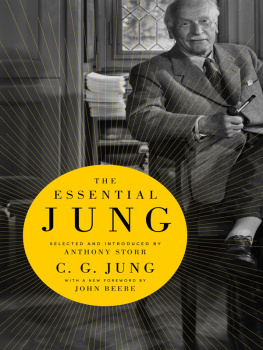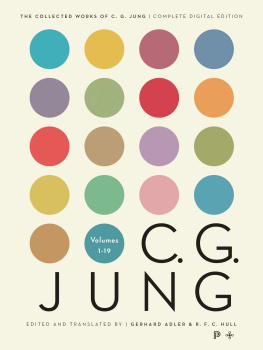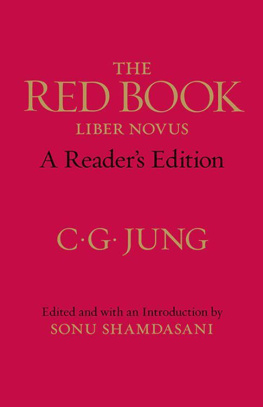
THE
RED BOOK
LIBER NOVUS
A Readers Edition
CG JUNG
Edited and with an Introduction by
SONU SHAMDASANI
PREFACE BY ULRICH HOERNI
TRANSLATED BY MARK KYBURZ,
JOHN PECK, AND SONU SHAMDASANI

A publication in arrangement with
the Foundation of the Works of C. G. Jung, Zrich
W. W. Norton & Company
New York London
Contents
Note: Black numbers refer to the translation. Red numbers refer to the plates in the facsimile edition. |
More than a decade has passed since the memorable decision of the former society of heirs of C. G. Jung to release The Red Book for publication. Much consideration was given to what kind of audience this multilayered work should be directed: Professional readers of works on the history of psychology? The general reader? Visually receptive people, orientated toward images? Lovers of calligraphy? Collectors of beautiful books? Which aspects should the format and design of the publication foreground? These questions werent easy to answer, since even the physical appearance of the precious original seemed to contain a message. Many proposals were discussed and discarded. It was W. W. Norton that finally found the appropriate solution: a complete facsimile edition, which was presented in its original format in 2009. Overwhelming success proved that the publisher was right. The work rapidly spread worldwide and is already available in nine languages. Evidently, it was possible to design an edition that did justice not only to the many facets of the work but also to the different types of audience. The list of people to whom the credit for this success is due is now of considerable length. However, two names especially deserve to be mentioned, Jim Mairs (W. W. Norton) and Sonu Shamdasani (Philemon Foundation).
The present Readers Edition contains the complete text of the original. It is specifically aimed toward those who would like to engage deeply with the literary documentation of Jungs inner development. It would undoubtedly accord with Jungs intention if this edition helps readers to make their reading more fruitful for their own development.
Ulrich Hoerni
Foundation of the Works of C. G. Jung
July 2012
Since 1962, the existence of C. G. Jungs Red Book has been widely known. Yet only with the present publication is it finally accessible to a broad public. Its genesis is described in Jungs Memories, Dreams, Reflections, and has been the subject of numerous discussions in the secondary literature. Hence I will only briefly outline it here.
The year 1913 was pivotal in Jungs life. He began a self-experiment that became known as his confrontation with the unconscious and lasted until 1930. During this experiment, he developed a technique to get to the bottom of [his] inner processes, to translate the emotions into images, and to grasp the fantasies which were stirring... underground. He later called this method active imagination. He first recorded these fantasies in his Black Books. He then revised these texts, added reflections on them, and copied them in a calligraphic script into a book entitled Liber Novus bound in red leather, accompanied by his own paintings. It has always been known as the Red Book.
Jung shared his inner experiences with his wife and close associates. In 1925 he gave a report of his professional and personal development in a series of seminars at the Psychological Club in Zrich in which he also mentioned his method of active imagination. Beyond this, Jung was guarded. His children, for example, were not informed about his self-experiment and they did not notice anything unusual. Clearly, it would have been difficult for him to explain what was taking place. It was already a mark of favor if he allowed one of his children to watch him write or paint. Thus for Jungs descendants, the Red Book had always been surrounded by an aura of mystery. In 1930 Jung ended his experiment and put the Red Book asideunfinished. Although it had its honored place in his study, he let it rest for decades. Meanwhile the insights he had gained through it directly informed his subsequent writings. In 1959, with the help of the old draft, he tried to complete the transcription of the text into the Red Book and to finish an incomplete painting. He also started on an epilogue, but for unknown reasons both the calligraphic text and epilogue break off in midsentence.
Although Jung actively considered publishing the Red Book, he never took the necessary steps. In 1916 he privately published the Septem Sermones ad Mortuos (Seven Sermons to the Dead), a short work that arose out of his confrontation with the unconscious. Even his 1916 essay, The Transcendent Function, in which he described the technique of active imagination, was not published until 1958. There are a number of reasons why he did not publish the Red Book. As he himself stated, it was unfinished. His growing interest in alchemy as a research topic distracted him. In hindsight, he described the detailed working out of his fantasies in the Red Book as a necessary but annoying aestheticizing elaboration. As late as 1957 he declared that the Black Books and the Red Book were autobiographical records that he did not want published in his Collected Works because they were not of a scholarly character. As a concession, he allowed Aniela Jaff to quote excerpts from the Red Book and the Black Books in Memories, Dreams, Reflectionsa possibility which she made little use of.
In 1961, Jung died. His literary estate became the property of his descendants, who formed the Society of Heirs of C. G. Jung. The inheritance of Jungs literary rights brought an obligation and challenge to his heirs: to see through the publication of the German edition of his Collected Works. In his will, Jung had expressed the wish that the Red Book and the Black Books should remain with his family, without, however, giving more detailed instructions. Since the Red Book was not meant to be published in the Collected Works, the Society of Heirs concluded that this was Jungs final wish concerning the work, and that it was an entirely private matter. The Society of Heirs guarded Jungs unpublished writings like a treasure; no further publications were considered. The Red Book remained in Jungs study for more than twenty years, entrusted to the care of Franz Jung, who had taken over his fathers house.
In 1983 the Society of Heirs placed the Red Book in a safe-deposit box, knowing that it was an irreplaceable document. In 1984 the newly appointed executive committee had five photographic duplicates made for family use. For the first time, Jungs descendants now had the opportunity to take a close look at it. This careful handling had its benefits. The Red Books well-preserved state is due, among other things, to the fact that it has only rarely been opened in decades.
When, after 1990, the editing of the German Collected Worksa selection of workswas drawing to a conclusion, the executive committee decided to start looking through all the accessible unpublished material with an eye to further publications. I took up this task, because in 1994, the Society of Heirs had placed the responsibility for archival and editorial questions on me. It turned out that there was an entire corpus of drafts and variants pertaining to the
Next page
